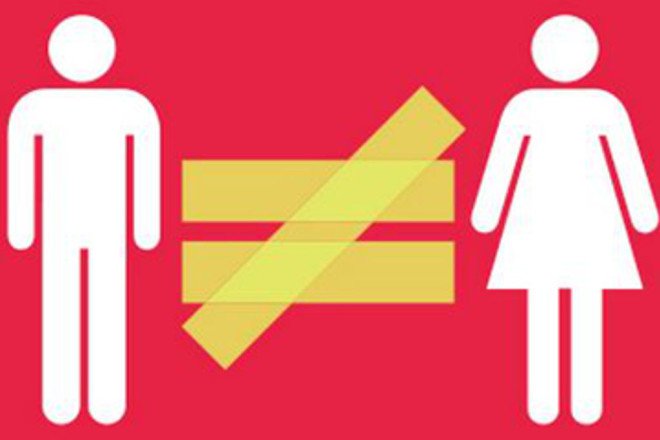Gender Equality: A Far- Fetched Dream in the Indian Scenario

Shilpa Rani is a third-year undergraduate pursuing law from NUSRL, Ranchi. She believes that having an idea is futile if it is not expressed to the world. She wants to give all her dreams a chance.
Gender Equality: A Far- Fetched Dream in the Indian Scenario
In India, gender equality is seen in movements, in write-ups but not in reality. Gender acts as a division, as a difference in our society. We all know that gender is not biologically determined, rather, it is socially constructed. We assume certain things, for example, that women are physically weak, they are emotional, passive, submissive; therefore they are engaged in household works, child- rearing, nurturing etc. On the other hand, men are supposed to be active, dominant; therefore they are engaged in more active and physical work out of the house. On a closer and attentive look, we notice that none of the assigned characteristics are biological; all of them are social and cultural. Hence, gender is socially determined.
In the Indian scenario, gender equality is a far-fetched dream. Everyone talk about this but no one really appreciates the problem in the true sense. Declining sex- ratio and declining child sex- ratio clearly indicate that discrimination on the basis of gender is done at grass root level. Sex ratio is defined as the number of females per thousand males. It is the numerical relationship between males and females, which is basic indicator of equality in a country at a specific point of time. Sex ratio is an important social indicator to measure the extent of the prevailing equity between males and females in a society at a given point of time. Changes in sex ratio largely reflect the underlying socio-economic and cultural patterns of a society in different ways. India is one of the few countries in the world where males outnumber females. Declining sex ratio is a silent emergency. But the crisis is real, and its persistence has profound and frightening implications for society and the future of humankind. In India, census figures clearly show that the sex ratio of the age group 0-6 has declined at a rather disturbing pace since 1981. It points towards deeply rooted structures of gender inequality. The main cause of this problem has been ascribed to social, economical and cultural factors, which together cause incentive for son preference. Discrimination against the girl child is an old tradition in India.
Behind this lies a story of sex selective discrimination by active elimination through abortion of the female fetus and passive elimination through neglect ultimately leading to the death of female child. Fertility decline and the government’s efforts on propagation of family planning have added a justification and rationalization of deliberate family planning strategies which have contributed to spread of sex selection techniques.
Women in our society have occupied a low status and are neglected. As women are considered to be a burden, female infant mortality exceeds that of males. A girl child faces deprivation throughout her life. Preference for a son is obvious from the traditions that are prevalent in our society. The 2001 census of India results also show marked declines in areas and social groups that earlier showed more balanced sex ratios. This indicates that discrimination against daughters has spread to new regions and from higher strata to lower, suggesting a necessity to analyse the structure and dynamics of problem.
Girls in India are discriminated against in other ways as well – fewer months of breastfeeding, less nurturing and play, less medical treatment if they fall ill, less special food, less prenatal attention. As a result, girls are far more susceptible than boys to disease and infections, leading to poor health and a shorter lifespan. It is this lifelong discrimination in nurturing and care that is the real killer of girls, less visible and less dramatic, but as unequivocally lethal as female foeticide and infanticide (UNICEF, 1998). Tinnari, (2002) and Nayar, (1995) observed that the various reasons for not wanting daughters were: dowry, forbidding wedding expenses, long requirement of giving gifts and money to daughters, lack of availability of girls to look after parents after marriage, domestic violence, ill treatment by husbands and in-laws, ill treatment of women after they give birth to a girl, and not wanting to go through the same fate as them.
It should be publicized at a wide level that imbalance in the sex composition not only means violation of the human rights of a girl child, but it can also lead to disastrous demographic and social consequences. Indian mythology says that Shiv(male) and Shakti(female) complement each other to manage affairs of world, but women in India are subjected to discrimination and losing their parity with opposite sex, they became subjugated to male dominance in rural society. We have to acknowledge that there is something wrong with the perception of women in India. We worship female deities and proudly preach about equality in ancient societies and female gurus. But in practice, all these arguments fall flat on their face. The problems are much more deeply rooted in society and laws cannot solve the problem. Gender inequality is more social rather than being legal. Society needs to change its perspective towards half of population.


